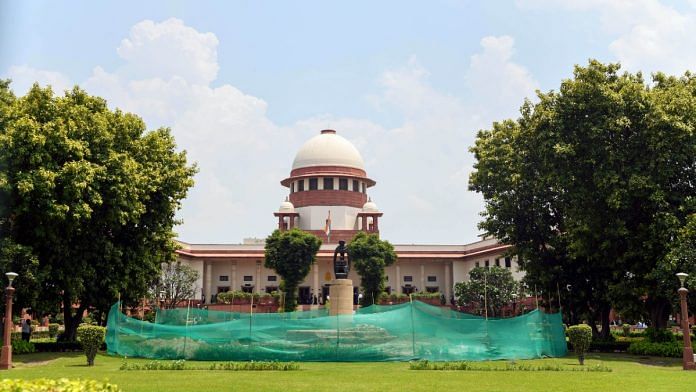New Delhi: A report released by the Centre for Research and Planning of the Supreme Court of India shows that 492 of the 650 judges appointed in the past five years to the high courts belonged to the general category.
The report titled ‘State of the Judiciary: A report on Infrastructure, Budgeting, Human Resources and ICT’, which was uploaded on the SC’s website on 15 December, also examined the representation of marginalised sections in the judiciary.
It noted that Articles 15 and 16 of the Constitution of India enable the state and central governments to reserve seats in government services for reserved categories — such as the Scheduled Castes (SCs), Scheduled Tribes (STs), Other Backward Classes (OBCs), and Economically Weaker Sections (EWS).
In the recruitment of judges to the district judiciary, reservation is provisioned for the above categories, said the report.
It then examined the status of recruitment of Civil Judges (Junior Division) from the reserved category in six states — Bihar, Gujarat, Madhya Pradesh, Rajasthan, Haryana and Uttar Pradesh — which had the greatest number of vacancies.
The report noted that in these states, of the 1,389 seats advertised for the Civil Judge (Junior Division) exam, 766 posts were advertised for the reserved category, which includes SCs, STs, OBCs, EWS, and others, as applicable to each state.
However, the report revealed that 37.5 percent of the reserved category seats remained unfilled in these six states. These vacancies accounted for 66.3 percent of the total unfilled seats in the last Civil Judge (Junior Division) recruitment exam.
The report also found that 142 (84.5 percent) of the 168 seats reserved for the ST category were still vacant in these states.
“At a time when the judiciary needs maximum judge strength to cut down the mounting arrears, unfilled vacancies, especially from the reserved category, call for sincere action,” the report said.
Also Read: 24,000+ cases pending in SC for more than 5 yrs, 8,000 for over a decade, govt tells Rajya Sabha
Shortage of 5,300 judges
In its section on human resource management, the report said that in India — with a population of 139.23 crore — there are 5.05 crore pending cases, handled currently by 20,580 judges working at all levels of the judiciary.
It then noted that as of 1 October, there were 347 vacant judges’ posts (31 percent) in the high courts against the sanctioned strength of 1,114 judges.
Further, as of 1 April, the total sanctioned strength of judges in the district judiciary was 25,081, and the working strength was 19,781 — leading to a deficit of 5,300 judges (21 percent).
The report also noted that women now constitute 36.3 percent of the working strength of the district judiciary. However, things don’t look as good in the Supreme Court and the high courts.
It said that as of 1 October, the Supreme Court had only three women judges out of its working strength of 32 judges, and there are only 103 female judges (13.42 percent) out of 767 permanent and additional judges in the high courts across India.
The appointment of judicial officers in the district judiciary is the responsibility of the state governments and the respective high courts.
Several states, like Andhra Pradesh, Bihar, Chhattisgarh, Karnataka, Odisha, Rajasthan, Tamil Nadu, and Uttar Pradesh, provide reservations for women in judicial examinations to promote gender diversity.
The report revealed that the strength of women judges has substantially been increasing in the district judiciary, according to the results of the last Civil Judge (Junior Division) recruitment exam conducted in the 16 states.
The results showed that out of the 16 states examined, 14 had over 50 percent of women judicial officers selected in the last Civil Judge (Junior Division) recruitment exam.
Shortage of courtrooms
The report also highlighted an infrastructure gap in the courts. It noted that for the sanctioned strength of 25,081 judges in the district judiciary, there is a shortage of 4,250 courtrooms and 6,021 residential units.
Moreover, it pointed out that 42.9 percent of the total courtrooms have been under construction for over three years as of 1 April.
“Maharashtra has adequate courtrooms and residential units for judges in the district judiciary, whereas Jammu and Kashmir, Ladakh and Tripura have the maximum shortage of courtrooms,” the report added.
(Edited by Richa Mishra)
Also Read: With ‘3 commissioners set to retire Monday’, CIC likely to become defunct if vacancies aren’t filled



